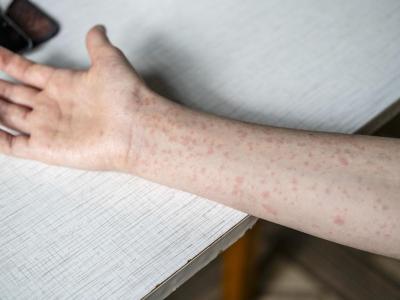CDC ends special entry screening for Liberia travelers
The US Centers for Disease Control and Prevention (CDC) has stepped down its travel advisory level for Liberia, with the country now more than 2 weeks past achieving Ebola-free status for the second time. The CDC today moved the alert level to the green watch level 1, which recommends practicing the usual precautions, according to a Sep 18 media statement.
The CDC said it is no longer recommending that US residents practice enhanced precautions when traveling to Liberia, though travelers, as usual, should avoid contact with sick people, dead bodies, or blood and body fluids. It added that Liberia's healthcare infrastructure was severely strained by the outbreak, but is now returning to normal.
Though Guinea and Sierra Leone have made much progress against Ebola, the outbreak has not ended there, keeping the CDC's earlier precautions in place for those nations.
Though travelers leaving Liberia will still be screened for fever and Ebola symptoms, as of today enhanced entry screening has ended for travelers coming to the United States from Liberia, and those travelers will no longer be funneled through the handful of US airports conducting enhanced Ebola screening. The CDC is still recommending that people traveling from Liberia monitor their health for fever or other Ebola symptoms for 21 days after they leave Liberia.
Sep 18 CDC media statement
Sep 21 CDC traveler's health update
AP investigation details Ebola response missteps in Sierra Leone
Ineffective chlorine, ineptness by government officials, infighting, and problems getting supplies are among the logistical problems uncovered by an Associated Press (AP) investigation into the bungled response by the World Health Organization (WHO) and other groups in Sierra Leone last August.
The report, published yesterday, is based e-mails, conference-call recordings, and interviews obtained by the AP, focusing on events in Kenema last year during the Ebola outbreak.
The report said breakdown in the response in Kenema—which played out in other outbreak areas—may have influenced the course of the outbreak, given the city's proximity to the forested region of Guinea and transportation links to Freetown.
According to the report, the WHO made the decision to use Sierra Leone's chlorine supply, which was found to be defective and likely undermined health workers' resolve and put them at risk. The report also said problems with leadership at the WHO and in Sierra Leone's government led to delays in building treatment centers and procuring crucial supplies such as body bags and personal protective equipment.
The report also described infighting and poor communication between a private US-based response group and the WHO, and hinted at incompetence and bureaucratic red tape in Sierra Leone that led to problems with moving supplies and tracking cases.
Experts interviewed by the AP had a range of opinions about the bungled response in Sierra Leone, from noting that fear and community resistance overshadowed problems by agencies and the government to skepticism that the WHO response will go more smoothly during the next major global public health crisis.
Sep 20 AP story
Regeneron, BARDA sign agreement for Ebola drug development
Regeneron Pharmaceuticals, Inc., today announced an agreement with the US government to develop, study, and make a monoclonal antibody treatment for Ebola infection.
The deal with the Department of Health and Human Services (HHS) Biomedical Advanced Research and Development Authority (BARDA) is worth an initial $17 million that could cover preclinical development and antibody manufacturing, according to a press release from the company, based in Tarrytown, N.Y. An option for an additional $21 million would provide for a phase 1 study in healthy volunteers planned for January 2016 and further manufacturing and development.
The company says it uses proprietary technologies that allow the rapid identification and preclinical validation of fully human monoclonal antibodies, which would be used to develop a novel antibody "cocktail" that includes a combination of three antibodies. Regeneron has done preclinical studies in animals, which were found during work stemming from an earlier agreement with Sanofi.
So far treatments for Ebola have been cleared by regulatory bodies, but trials are under way for several. The first clinical trial of ZMapp, a monoclonal antibody treatment that was used for several patients on an emergency bases, launched in Liberia in February. Last week the drug's maker, Mapp Biopharmaceuticals, announced that ZMapp had received fast-track status for US Food and Drug Administration approval.
Sep 21 Regeneron press release
Sep 21 HHS news release
Sep 18 CIDRAP News scan "Possible Ebola treatment ZMapp receives FDA fast-track status"










